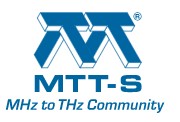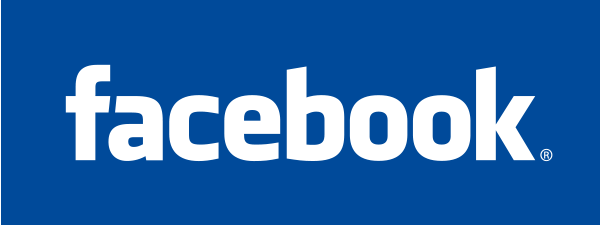Date & Time: Sunday, 21 January, 2024, 1:30pm – 5:30pm
RF and Millimeter-Wave Communication Systems : Design and Analysis
Organizer: Mathworks
Room: Crockett AB
Abstract
The current trend for wireless systems to operate at millimeter wave (mmWave) frequencies and over wide bandwidth drives challenging requirements for RF front ends. In this webinar, you will learn how MATLAB and Simulink can be used for modeling RF and mmWave transceivers, performing RF budget analysis, and simulating wideband adaptive architectures.
We will first address typical RF data analysis tasks, such as reading and writing Touchstone files, transforming, visualizing, and fitting S-parameters for distributed elements. As a second step, we will discuss how to model and simulate amplifiers, matching networks, and antenna arrays operating at mmWave frequencies. Using virtual prototypes, we will simulate wideband transmitters and receivers including co-existence and interference scenarios, beam-squinting and antenna coupling, and dynamic EVM measurements for different communications standards such as 5G FR2.
With practical examples, we will demonstrate how to optimize baseband signal processing algorithms and control logic together with RF transceivers to compensate for RF impairments, to increase resilience to interfering signals, and to support multiple communication standards.
Highlights
- Introducing RF analysis and RF system design with MATLAB
- Managing and manipulating S-parameters data
- Designing MIMO RF front-ends and antenna arrays
- Integrating antennas and PCB components into RF front ends: modeling coupling, dispersion, impedance mismatch
- Modeling wideband mmWave beamforming RF transmitters and receivers
- Simulating co-existence and interference scenarios
- Scaling up simulation of array systems with thousands of elements
Organizers: John Dooley, Maynooth University and Pushkar Kulkarni, Qualcomm
Room: Crockett CD
Abstract
PA design paradigm changes from mm-wave to sub-mm-wave frequencies. We will look at the device technology (Si and 111-V) capabilities and the amplifier architectures, derive compact transistor modeling and its translation to system figures of merit. The device level reliability mechanisms, its circuit-level impacts and the architecture-level mitigation techniques, including the case for PMOS based PAs will be discussed. We will survey the sub-mm-wave PA designs which tend to be simpler architectures with power combining and more stages, with class-A bias and lesser harmonic control. These exacerbate the reliability, stability and thermal concerns.
Organizer: Jan Budroweit, DLR
Room: Republic BC
Abstract
Ground stations are the backbone for any kind of satellite communication. The evolution of those terrestrial satellite communication infrastructures has become extremely diverse from classic ground stations as everyone knows with big dishes for deep space communication, small ground stations on the rooftop of university buildings as well as new technologies such as inter satellite link communication for 24/7 access to low Earth orbit satellites. In this workshop we will provide a great set of speakers with insights from different perspectives, incl. space agencies, academia and commercial services.
Date & Time: Monday, 22 January, 2024, 3:40pm – 5:20pm
From Lab to Market: Empowering Researchers for Entrepreneurial Success
This workshop is free to all registered conference attendees.
Organizer: Weston Waldo, Director NSF I-Corps Southwest Region Hub
Room: Texas A
Abstract
Are you a researcher with groundbreaking technology seeking to take your innovations from the lab to the market? Join us for an inspiring and informative workshop as part of the prestigious IEEE Radio & Wireless Week! This workshop is dedicated to nurturing entrepreneurship among researchers like you, who are determined to bridge the gap between cutting-edge research and real-world impact.
Led by Weston Waldo, an expert in entrepreneurship and a key member of the newly funded National Science Foundation $15M Southwest Hub I-Corps grant, this workshop offers a unique opportunity to learn essential strategies for commercializing your research findings. The Southwest Hub I-Corps grant’s mission is to empower and guide early-stage researchers, providing them with the tools and knowledge needed to navigate the challenging journey of technology commercialization.
During this interactive workshop, you will gain invaluable insights into:
- Identifying Market Opportunities: Understand how to identify and assess potential markets for your technology, ensuring your innovations meet real-world demands and needs.
- Developing a Business Model: Learn how to create a solid business model that aligns with your research, effectively translating your ideas into a commercially viable product or service.
- Market Validation: Discover the importance of market validation and how to engage with potential customers and stakeholders to refine your offerings.
- Funding and Resources: Explore various funding options and support resources available to early-stage researchers, including the opportunities offered by the Southwest Hub I-Corps grant.
- Entrepreneurial Mindset: Cultivate the entrepreneurial mindset required to navigate the challenges of entrepreneurship, including risk-taking, adaptability, and resilience.
Whether you’re just starting to explore the world of entrepreneurship or have already taken your first steps, this workshop is designed to equip you with the knowledge, skills, and confidence to successfully bring your technology to the market. Be prepared to engage in stimulating discussions, practical exercises, and networking opportunities with like-minded researchers and seasoned entrepreneurs.
Don’t miss this chance to unlock your potential as a technology entrepreneur! Join us at the IEEE Radio & Wireless Week and embark on a transformative journey from lab to market.






